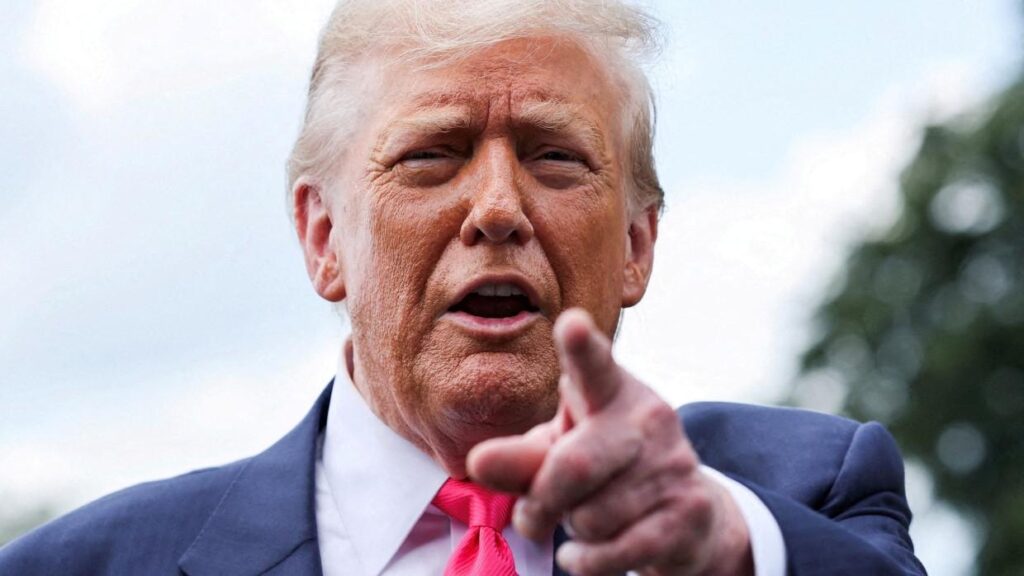Former U.S. President Donald Trump’s policies and rhetoric continue to exert a significant influence on Southeast Asia’s geopolitical landscape, prompting both opportunities and challenges for the region’s future. As nations in Southeast Asia navigate a complex web of economic, security, and diplomatic considerations, the enduring impact of Trump-era strategies raises questions about Washington’s long-term engagement and whether the former president fully grasps the consequences of his legacy on this critical part of Asia. This article examines how Trump’s approach to trade, alliances, and regional power dynamics is reshaping Southeast Asia—and what it means for policymakers and stakeholders on both sides of the Pacific.
Trump’s Strategic Pivot to Southeast Asia and Its Regional Implications
Under the Trump administration, the United States recalibrated its foreign policy, signaling a clear strategic pivot toward Southeast Asia. This shift aimed to counterbalance China’s growing influence by deepening diplomatic ties and expanding military cooperation with key regional actors such as Vietnam, the Philippines, and Indonesia. Through initiatives like increased joint military exercises and recalibrated trade agreements, Washington sought to reaffirm its commitment to a “free and open Indo-Pacific,” positioning itself as a vital partner in the region’s economic and security architecture.
- Enhanced military presence: Increased rotational deployments and maritime security collaborations.
- Economic incentives: Promotion of trade deals bypassing dependence on Chinese supply chains.
- Diplomatic engagement: High-level summits fostering ASEAN connectivity and mutual trust.
The implications resonate beyond bilateral ties, fundamentally reshaping Southeast Asia’s geopolitical landscape. Regional nations now face complex choices balancing economic dependencies on China with strategic security partnerships with the U.S. This realignment has also induced competitive dynamics within ASEAN, challenging the organization’s long-standing principle of neutrality. As countries navigate this evolving environment, Washington’s assertiveness has sparked both cooperation and cautious recalibration among Southeast Asian governments, underscoring the delicate interplay of regional sovereignty and external influence.
| Country | U.S. Military Engagement | Trade Initiatives | |
|---|---|---|---|
| Vietnam | Annual joint naval drills | Expanded technology partnerships | |
| Philippines | Philippines | Enhanced rotational troop deployments; increased access to bases | Trade discussions on agricultural exports and technology transfer |
| Indonesia | Expanded maritime security collaboration and joint exercises | Promotion of joint infrastructure projects and digital economy initiatives |
| Aspect | Prospects | Challenges |
|---|---|---|
| Trade & Investment | Expanded US market access, infrastructure funding | Tariffs, supply chain disruptions |
| Security Cooperation | Enhanced military support, intelligence sharing | Risk of regional polarization, escalating tensions |
| Diplomatic Balance | New partnerships, diversified alliances | Pressure between US-China rivalry |
Policy Recommendations for Navigating a Shifting Southeast Asian Geopolitical Landscape
In light of growing geopolitical tensions and shifting alliances, policymakers must prioritize a nuanced, multilayered approach to Southeast Asia. Diplomatic engagement should be intensified not only bilaterally but within multilateral frameworks such as ASEAN to foster regional cohesion and balance external influences. Furthermore, economic strategy must focus on sustainable development and technological innovation, boosting resilience against external shocks. Governments in the region are urged to strengthen their maritime security capabilities while simultaneously pursuing peaceful conflict resolutions to maintain the critical trade routes that underpin global commerce.
Building strategic partnerships beyond traditional Western alliances is equally vital. Southeast Asian states should deepen ties with emerging powers, emphasizing sectors like digital infrastructure, climate change mitigation, and health security. The table below outlines key focus areas for policymakers in the Southeast Asian geopolitical landscape:
| Focus Area | Recommended Action | Expected Outcome |
|---|---|---|
| Diplomatic Outreach | Expand ASEAN-led initiatives | Enhanced regional unity |
| Maritime Security | Joint naval exercises and intelligence sharing | Increased sea lane safety |
| Economic Diversification | Invest in tech innovation hubs | Greater economic resilience |
| Strategic Partnerships | Engage emerging global actors | Broader diplomatic leverage |
Closing Remarks
As Southeast Asia navigates a shifting geopolitical landscape, the lasting impact of Donald Trump’s policies and rhetoric continues to unfold across the region. Whether intentional or inadvertent, the recalibration of U.S. engagement under his administration has set in motion strategic realignments that will shape the Asia-Pacific’s future for years to come. As policymakers on both sides of the Pacific assess these developments, the question remains: to what extent did the former president anticipate the full scope of his influence on one of the world’s most dynamic regions? Only time will reveal the enduring legacy of Trump’s footprint in Southeast Asia.
